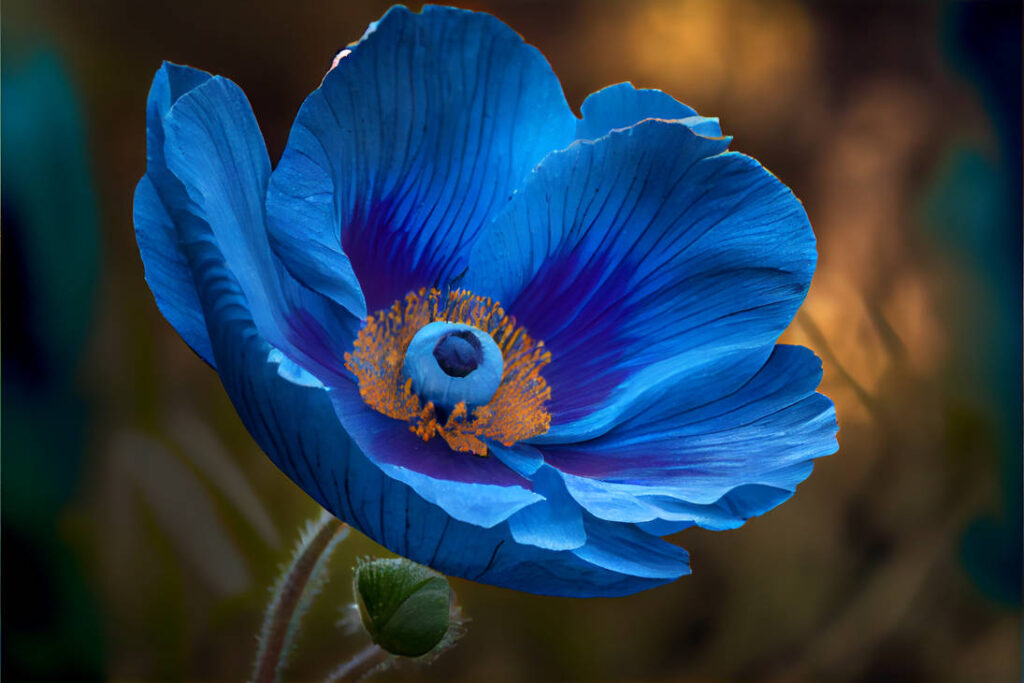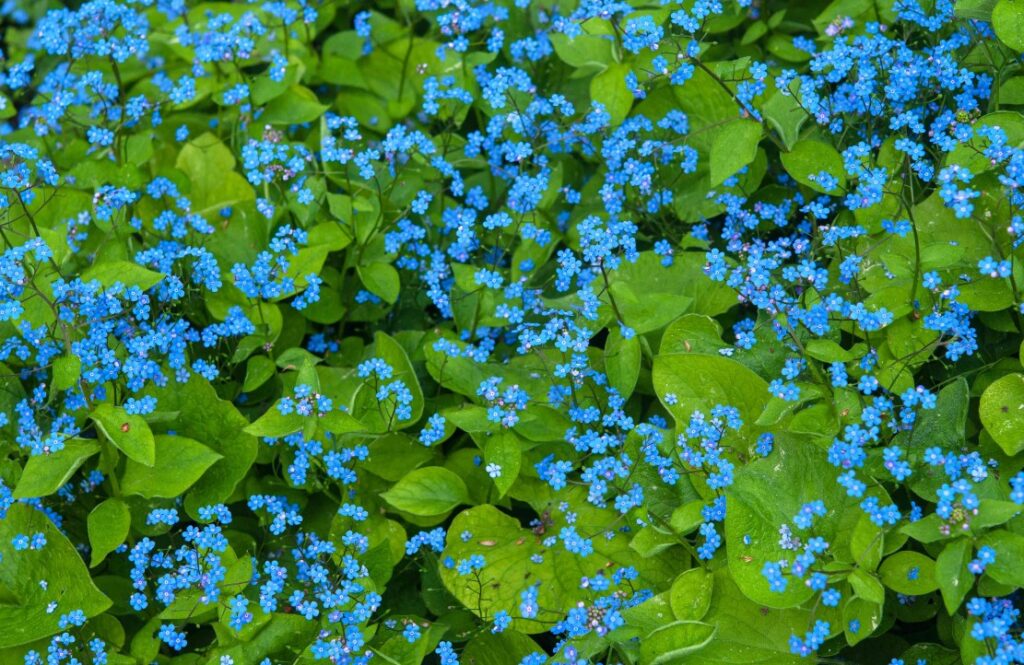We can’t all be blessed with a south-facing garden, and even those that are may still have the odd shaded corner to fill. The good news is that not all plants are fans of direct sunlight. Some were born to fill shady spots with foliage and colour, even with limited sunlight.
Flowering Plants for Shade

Source: deviantart.com
Himalayan Blue Poppy (Meconopsis baileyi)
Himalayan poppies are easier to grow in Scotland and Northern England than they are in the south of the country. They prefer shaded, damp conditions and scorch easily in the direct sun. Plant Himalayan blue poppies in moist, well-draining soil in a spot that is sheltered from strong winds.
Himalayan blue poppies are ideal for flower beds and look the part in a woodland garden. The blue cup-shaped flowers boast bright yellow centres and produce a cherry floral display from late spring to mid-summer.
While you’re here check some of the garden plants at Gardeners Dream.
Lily of the Valley (Convallaria majalis)
This hardy perennial flowers in late spring, blooming racemes of highly fragrant small bell-shaped white flowers. These shade lovers are ideal for underplanting in borders flower from mid-spring to early summer.
Lily of the valley prefers moist chalky or sandy soil types and tolerates poor drainage. They grow well in partial shade or full shade and are relatively low-maintenance plants for a shady spot.
Siberian Bugloss (Brunnera macrophylla)
Flowering from mid to late spring, this hardy perennial is perfect for growing in partial shade. It prefers well-draining moist soil, is easy to look after and provides attractive ground cover in beds and borders. The small blue flowers are star-shaped and perfectly complement the heart-shaped green leaves.
Siberian bugloss is ideal for cooler climates. As herbaceous perennials, these attractive plants for shade die back below ground in winter and emerge again the following spring.

Source: thespruce.com
Bleeding Heart (Lamprocapnos spectabilis)
While bleeding heart plants flourish in full sun, they also thrive in dappled shade and partial shade. Cute little heart-shaped flowers have white tips and grow along arching stems above fern-like rich green leaves, hence the name bleeding heart.
The pink flowers appear from mid-spring to early summer, attracting bees and butterflies to the garden. They also work well as part of a cut flower display. Grow bleeding heart plants in damp shade towards the front or middle of borders.
Foxglove (Digitalis purpurea)
Foxglove is one of those elusive plants that grow well in any light conditions, from full sun to full shade. A rosette of soft green leaves provides a base for the tall, erect spires of flowers to grow. Common foxglove plants produce tubular purple flowers with spotted throats and bloom from late spring to mid-summer. Leaving the seeds to self-sow before deadheading spent blooms can encourage a second flourish of flowers before the summer is out.
Plant foxglove in moist but well-draining soil and watch as pollinators flock to the garden to enjoy these nectar-rich flowers.
Granny’s Bonnet (Aquilegia)
These easy-to-grow, self-seeding flowering plants are ideal for informal and cottage-style gardens. Also known as common columbine, these cute little flowers prefer to be planted in moist soil in semi-shade.
They flower in late spring to early summer and come in a range of flower colours from pale pink to inky blue. Some even have bicolour double petals, and others, pure white flowers. These flowers grow in clusters on tall stems growing from clumps of pale green scalloped leaves.
Foliage Plants for Shade

Source: heraldnet.com
Coral Bells (Heuchera)
Coral bells is a great option for ground cover in borders and flower beds but also grows well planted in pots and containers. These low-maintenance plants are easy to grow and come in an array of vivid leaf colours, from lime green through dark purple to metallic pink. These shade-loving plants keep their foliage all year round and sometimes produce tiny flowers in summer.
Most heuchera varieties thrive in partial shade, but the darker the foliage, the more sun the plant can tolerate. They prefer light, well-drained soil and grow well between other plants for shade.
Leopard Plant (Ligularia)
While leopard plants produce tall spires of bright yellow flowers in summer, they are usually grown for their attractive foliage. These herbaceous perennials feature large heart-shaped leaves and are high among the best plants for shady areas with poorly-draining soil.
Leopard plants prefer a sheltered spot in damp shade where the soil doesn’t dry out. Ligularias need to be watered regularly during hot, dry spells of weather.
Fragrant Plantain Lily (Hosta plantaginea)
A fragrant plantain lily is one of the best shade plants, thriving in partial and even fully shady areas of the garden.
White flowers grow on tall stems in summer and are highly scented, especially in the evenings. Despite the blooming of pretty flowers, hostas are usually grown for their foliage. Suitable for container gardening as well as growing in borders, fragrant plantain lily forms a mound with large glossy dark green leaves creating a striking display of foliage.
While hostas can tolerate some sunlight, keep them out of the hot afternoon sun. Slugs and snails love to munch on plantain lily leaves, so add some protection to prevent the large leaves from ending up full of holes.
Shrubs for Shade

Source: onlineplantencentrum.nl
Wood Spurge (Euphorbia amygdaloides)
This compact shrub is ideal for shady spots in corners or borders. Its evergreen foliage provides year-round interest, taking on a deep red tinge in autumn and winter. Dense clusters of bright yellow flowers bloom from late spring into summer giving the shrub a golden aura.
Wood spurge thrives in a shady area with moist but well-drained soil and is fully hardy in the UK.
Hydrangea Villosa Group (Hydrangea aspera)
These large deciduous shrubs are one of the best flowering plants for shade. Long, lanceolate, slightly hairy green leaves give way to clusters of tiny blue-purple flowers with larger sterile pink florets around the outside.
The flowers bloom from July to September, providing plenty of colour interest all summer long. This variety of hydrangea flourishes in a sheltered spot in partial or light shade.
Common Box (Buxus sempervirens)
One of the most popular shrubs in the country, the common box is easy to grow and prefers the shade, even tolerating deep shade. Its evergreen foliage provides year-round interest, from early spring to late winter, and responds well to pruning, making these shade plants ideal for topiary.
The glossy dark green leaves are leathery and small, reaching around 3cm and are densely packed, which is ideal for hedging. This versatile shrub grows well in most soil types and is fully hardy.
Grasses for Shade
Source: plants.ces.ncsu.edu
Tufted Hairgrass (Deschampsia cespitosa)
This fountain-shaped evergreen grass flourishes in light shade and partial sun. It produces tufts of stiff green leaves, from which tall, arching sprays of silvery-purple flower heads emerge.
These spires are long-lasting, turning brown with age and providing interest late in the season. They should be deadheaded in late winter and make an excellent addition to dried flower displays. Tufted hair grass prefers moist soils but is drought tolerant once established.
Japanese Forest Grass (Hakonechloa macra)
This striking ornamental grass is ideal for adding architectural interest to shady gardens. It provides dramatic autumn colour when the bright green leaves turn reddish-brown. Tall sprays of tiny pale green flowers bloom in early summer.
Japanese forest grass thrives in the most well-drained soils and tolerates all light conditions, from full sun to full shade. It is fully hardy and grows well as a feature in containers as well as alongside other plants in borders.

Source: masterclass.com
Pheasant’s Tail Grass (Anemanthele lessoniana)
Also known as New Zealand wind grass, this is a valuable evergreen plant offering year-round colour. The long, slender green foliage becomes tinged with orange and red as the leaves mature, resulting in a stunning display of colour in autumn and winter.
Tall arching stems appear in summer bearing sprays of airy red-brown flowers. For the most vibrant hues, keep the pheasant’s tail grass out of deep shade. Instead, plant it in dappled shade or partial shade.
Black Mondo Grass (Ophiopogon planiscapus ‘Nigrescens’)
This striking plant makes an excellent feature in containers and raised beds. Grown in full sun, the long narrow leaves take on a black hue. However, if you grow black mondo grass in dappled shade, the foliage becomes an unusual shade of purple-green.
Also known as black lily grass, black mondo grass is an evergreen perennial with racemes of small pale purple flowers in summer and blue-black berries in autumn.
Growing plants successfully in a shady garden can feel a bit like trial and error. However, choosing shade-loving plants can make decorating darker areas so much easier. Whether your outdoor space is north-facing or shaded by tall buildings and large trees, you can create a beautiful shade garden filled with fabulous flowers and fantastic foliage. Who knows – you may even discover some new favourite plants!

















